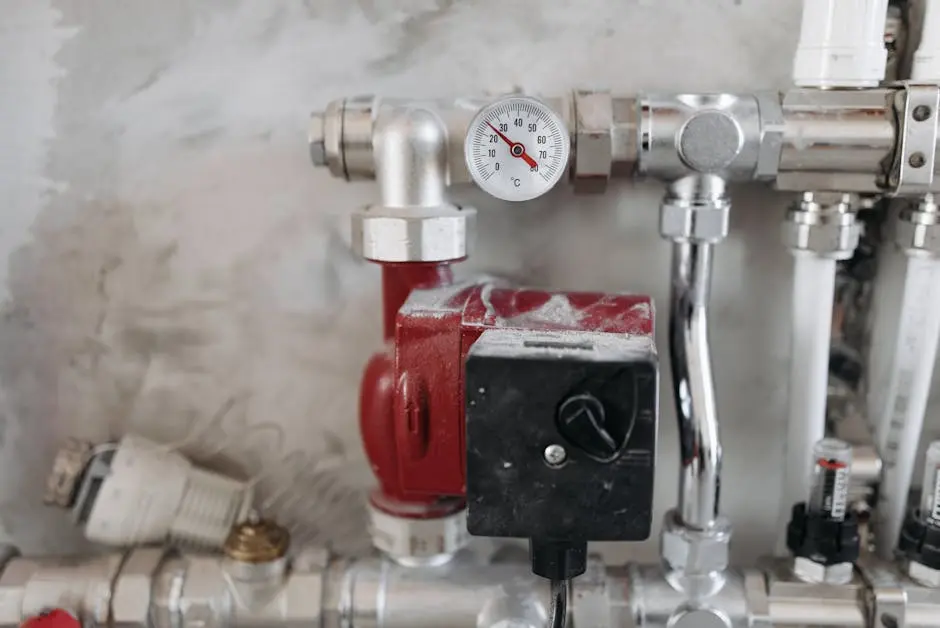12 Tips for Efficient Backflow Testing This Season
As the season gets into full swing, ensuring smooth and efficient backflow testing is essential for maintaining safe water systems. Whether you're a seasoned professional or a newcomer, these tips will help streamline your process and keep everything running smoothly. Let's dive into some practical advice!
1. Understanding Backflow Basics
Before diving into the testing, it's crucial to have a clear understanding of what backflow is and why it matters. This knowledge lays the foundation for more efficient testing. Basically, backflow occurs when contaminants infiltrate the clean water supply due to a drop in water pressure. This is why testing is not just a regulatory requirement, but a fundamental aspect of maintaining public health.
Grasping the reasons behind backflow, such as pressure changes from pipe bursts or high demands, helps you identify potential issues before they become problematic. A thorough understanding will enhance your ability to explain to clients why maintaining their backflow preventers is so vital to their overall water system health.
2. Regular Equipment Checks
Keeping your equipment in good condition is key to effective testing. Regular checks can prevent unexpected hiccups and ensure accurate results. Make a checklist of all essential components, including gauges, tools, and testing devices, and inspect them regularly.
Small issues, like a miscalibrated gauge, can lead to inaccurate readings, so give special attention to calibration and functionality. Scheduling regular maintenance can also extend the lifespan of your equipment, saving you both time and money in the long run.
3. Developing a Testing Schedule
Having a well-organized schedule ensures that all necessary tests are conducted in a timely manner, avoiding any compliance issues. Start by mapping out all client obligations and regulatory requirements.
Utilize modern scheduling software that can help you manage appointments, send reminders, and even automate parts of the process. This will aid in keeping track of deadlines and reduce the risk of oversight in both residential and commercial setups.
4. Keeping Up with Local Regulations
Staying informed about local guidelines is vital for ensuring that your testing procedures meet all required standards. Regulations can vary significantly by region, so it's important to keep abreast of any legislative changes that might affect your testing routines.
Consider subscribing to local water authority updates or joining industry groups that provide regular regulation digests. This proactive approach helps avoid penalties and fosters trust with clients by ensuring their systems remain compliant.
5. Training Your Team
A well-trained team is more efficient and less prone to errors. Regular training sessions can refresh and update their skills. Focus on both the theoretical aspects of backflow prevention and practical, hands-on testing exercises.
Organize workshops that bring in professional experts to showcase new techniques or tackle common testing challenges. Investing in your team's education not only enhances service quality but also boosts team morale and client satisfaction.
6. Documenting Procedures
Proper documentation ensures that any deviations can be quickly identified and rectified, making for a more reliable testing process. Creating a detailed log of each test conducted, complete with time, date, and test parameters, is invaluable.
Implement an automated documentation system which can help catalog test results, flag inconsistencies, and even automatically generate compliance reports. This not only streamlines operations but also provides a robust record for audit purposes.
7. Utilizing Technology
Embracing technology can lead to significant improvements in efficiency. Look for software solutions that aid in data collection and analysis. For instance, digital gauges and data management systems can reduce the risk of human transcription errors and speed up reporting.
Leverage mobile applications that allow real-time data syncing and client communication. These tools offer invaluable assistance in streamlining your workflow and providing instantaneous feedback on testing outcomes.
8. Communication with Clients
Keeping open lines of communication with clients ensures clarity and builds trust. This can lead to better cooperation and smoother processes. Whether it's updating them on test schedules, results, or necessary system upgrades, effective communication is key.
Consider implementing a customer portal where clients can access testing schedules, documentation, and directly communicate with your team. This transparency not only strengthens client relations but also enhances their satisfaction with your services.
9. Handling Unforeseen Challenges
Being prepared to face unexpected hurdles will ensure you can handle situations calmly and efficiently when they arise. Have a contingency plan in place to address issues like equipment failure or unexpected regulatory changes.
Engage your team in scenario-planning exercises to rehearse responses to various challenges. This preparation enables quick decision-making and mitigates the impact of potential disruptions.
10. Maintaining Records
Accurate and organized records are invaluable. They provide a history of compliance and can assist in future troubleshooting. Ensure that all test records are stored in a searchable, digital format for easy retrieval.
Establish a backup protocol to safeguard your records against data loss. Regular backups, whether on cloud-based systems or physical drives, offer peace of mind that even in the event of technological failures, vital records will remain accessible.
11. Safety First Approach
Prioritizing safety over everything else guarantees that both your team and clients remain protected. Make sure to adhere to all safety protocols, keeping protective gear and emergency plans readily accessible.
A continuous focus on safety training can dramatically minimize risks. Organizing regular drills and safety checks emphasizes the importance of precautionary measures and instills a culture of safety in your operations.
12. Seeking Continuous Improvement
Always look for ways to enhance your procedures. Regular reviews of your processes can lead to valuable insights and better practices. Solicit feedback from your team and clients alike to identify areas for modification and improvement.
Embrace innovative solutions and encourage your team to contribute ideas. Establishing a culture of continuous improvement ensures your business remains at the cutting edge of the industry, offering exceptional service and adapting to new challenges as they arise.

